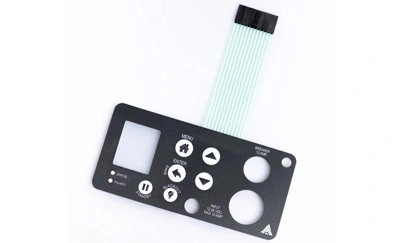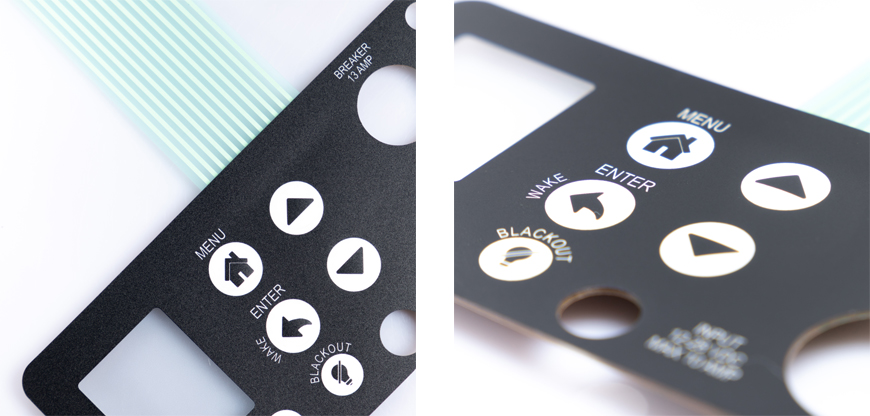
In today's fast-paced world, where technology is constantly evolving, the demand for innovative electronic devices is higher than ever before. One crucial component that plays a significant role in modern electronics is the flexible membrane switch. These switches have become a cornerstone in the design and functionality of various electronic gadgets. In this article, we will explore the world of flexible membrane switch factories, their significance, manufacturing processes, and how they are shaping the future of electronics.

Flexible membrane switches, often referred to as membrane keypads, are user interfaces that consist of multiple layers of flexible materials. These switches are designed to provide a reliable and durable way to interact with electronic devices. They are commonly used in applications such as remote controls, medical devices, industrial equipment, and consumer electronics.
A typical flexible membrane switch consists of several key components, including:
Graphic Overlay: This is the topmost layer of the switch, featuring printed graphics, symbols, and icons.
Overlay Adhesive: A layer of adhesive that attaches the graphic overlay to the next layer.
Top Circuit Layer: This layer contains the conductive traces that allow for electrical contact when pressed.
Separator: A thin layer that separates the top circuit layer from the bottom circuit layer.
Bottom Circuit Layer: Similar to the top layer, this layer contains conductive traces.
Rear Adhesive: Adhesive used to attach the bottom circuit layer to the surface of the device.
Supporting Layer: Often made of polyester or polycarbonate, this layer provides structural support.
Dome Retainer: Used to ensure tactile feedback when a button is pressed.
Dome Switch: The layer that, when pressed, activates the electrical contact.
Spacer: A layer that maintains the distance between the top and bottom circuit layers.
Tail: Connects the membrane switch to the device's main circuitry.
Flexible membrane switches are known for their versatility, as they can be customized in terms of design, size, and functionality to meet the specific needs of various applications.
Manufacturing flexible membrane switches is a complex yet precise process that involves several key steps:
1. Design and Prototyping
Before production begins, the design team creates a prototype to ensure that the switch meets the client's requirements. This step involves determining the layout, size, and functionality of the switch.
2. Material Selection
Choosing the right materials is crucial for the switch's performance. Depending on the application, materials like polyester, polyimide, or silicone can be used for the various layers.
3. Printing
The graphic overlay is printed with the desired graphics and symbols using high-quality ink. Precision is essential to achieve a clear and durable design.
4. Circuitry Printing
Conductive traces are printed onto the top and bottom circuit layers using specialized techniques like screen printing or digital printing.
5. Assembly
All the layers are carefully assembled in the correct order, ensuring that the conductive traces align correctly. Adhesive layers are applied to bond the layers together.
6. Testing
Each switch undergoes rigorous testing to ensure functionality and durability. This includes tests for electrical performance, tactile feedback, and resistance to environmental factors.
7. Quality Control
A thorough quality control process is implemented to identify and rectify any defects or imperfections in the switches.
Flexible membrane switch factories play a pivotal role in the electronics industry. They enable the mass production of customized switches that are essential for a wide range of electronic devices. Here's why they are significant:
Customization: These factories can create switches tailored to the unique needs of different industries, ensuring that devices function optimally.
Cost-Efficiency: Mass production of membrane switches reduces production costs, making them an affordable option for manufacturers.
Durability: Membrane switches are known for their resilience, ensuring long-lasting performance in various environments.
Design Flexibility: The ability to customize graphics and layouts allows for visually appealing user interfaces.
Integration: Membrane switches seamlessly integrate with electronic components, enhancing the overall functionality of devices.
As technology continues to advance, flexible membrane switches are likely to play an even more prominent role in electronics. Their adaptability, durability, and cost-effectiveness make them an attractive choice for emerging technologies such as wearable devices, flexible displays, and smart home automation.
In conclusion, flexible membrane switch factories are the unsung heroes of modern electronics, providing the interface that allows us to interact with our devices seamlessly. With the ever-increasing demand for innovative electronic gadgets, these factories are poised to shape the future of technology.
Are membrane switches only used in consumer electronics?
No, membrane switches are used in a wide range of industries, including medical, automotive, and industrial applications.
Can membrane switches withstand harsh environmental conditions?
Yes, membrane switches can be designed to be resistant to water, dust, chemicals, and extreme temperatures.
How long do membrane switches typically last?
Membrane switches are known for their durability and can last for millions of actuations, depending on the quality of materials and manufacturing.
Can I design a custom membrane switch for my product?
Yes, membrane switches are highly customizable, and you can work with a manufacturer to create a switch tailored to your specifications.
Where can I find more information about membrane switch manufacturers?
You can explore various manufacturers online or contact industry associations for recommendations.